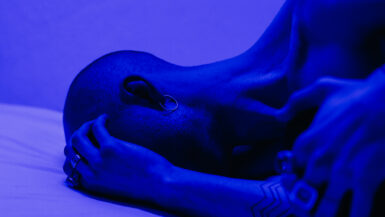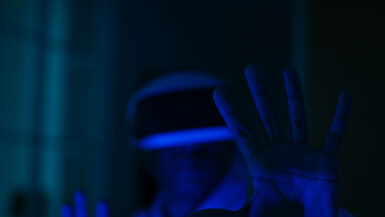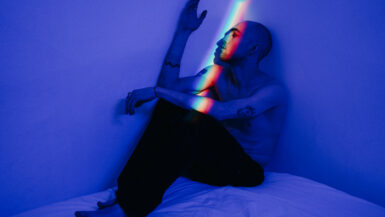In today’s fast-paced digital age, college students are increasingly exposed to screens emitting blue light, a high-energy visible light that has been linked to sleep disturbances and decreased productivity. The purpose of this article is to delve into the nuanced relationship between blue light exposure, sleep quality, and academic performance among college students. Drawing on scientific research and practical insights, we will explore the potential consequences of excessive screen time, discuss strategies to mitigate the negative effects of blue light, and emphasize the importance of sleep in fostering a productive and successful academic experience. Join us as we shed light on this critical issue and offer valuable advice for students seeking to optimize their sleep and overall well-being.
Strategies to Reduce Blue Light Exposure
In this section, we will explore various strategies that college students can adopt to reduce their exposure to blue light, thereby improving their sleep quality and overall academic performance. These strategies range from simple lifestyle changes to the use of specialized tools and technologies. By understanding and implementing these solutions, students can curtail the negative impacts of blue light exposure and pave the way for a more restful and productive college experience.
Establish a Screen-Free Bedtime Routine
Creating a screen-free bedtime routine is one of the most effective ways to minimize nighttime blue light exposure. Instead of using electronic devices before sleep, students can engage in relaxing activities such as reading a physical book, journaling, or practicing mindfulness techniques. By doing so, they can not only reduce their exposure to blue light but also wind down and prepare their minds for a restorative night’s sleep.
Invest in Blue Light Blocking Glasses
Blue light blocking glasses are designed to filter out the harmful blue light emitted by screens. Wearing these glasses while working on electronic devices can help protect the eyes and promote better sleep. Students should consider investing in a pair of blue light blocking glasses, especially if they spend long hours studying on their computers or tablets.
Adjust Device Settings
Many electronic devices come with built-in settings that allow users to reduce blue light emissions. Students can enable the “night mode” or “night shift” features on their smartphones, tablets, and computers, which typically adjust the color temperature of the display to emit less blue light. By making these simple adjustments, students can mitigate the impact of blue light on their sleep without having to drastically change their study habits.
Take Regular Screen Breaks
Taking regular breaks from screens can significantly reduce the cumulative effects of blue light exposure. Students should aim to take a short break from their screens every 20-30 minutes. During these breaks, they can engage in activities that help relieve eye strain, such as looking at a distant object or practicing eye exercises.
Be Mindful of Sleepwalking and Night Terrors
Exposure to blue light can also exacerbate sleep disorders, such as sleepwalking and night terrors. To learn more about this phenomenon, read our article on The Role of Blue Light in Sleepwalking and Night Terrors. By being aware of these potential consequences, students can take proactive measures to minimize their blue light exposure and maintain a healthy sleep schedule.
With these strategies in mind, college students can effectively reduce their exposure to blue light and experience its numerous benefits, such as improved sleep quality, better academic performance, and enhanced overall well-being. By taking a proactive approach to managing blue light exposure, students can set themselves up for success and make the most of their college years.
How Blue Light Affects Sleep Patterns
In this subsection, we delve deeper into the science behind blue light and its impact on sleep patterns, particularly among college students. By understanding the physiological processes at play, students can better appreciate the importance of managing their exposure to blue light and adopting lifestyle changes that promote a healthy sleep schedule.
The Role of Melatonin and Circadian Rhythm
Blue light has a significant impact on our body’s production of melatonin, a hormone responsible for regulating sleep-wake cycles. Exposure to blue light in the evening suppresses melatonin release, making it harder for individuals to fall asleep and disrupting their natural circadian rhythm. This disruption can result in sleep disturbances, such as insomnia and fragmented sleep, which can negatively impact a student’s ability to concentrate, retain information, and perform at their best academically.
Blue Light and Sleep Quality
Aside from affecting sleep onset, blue light exposure can also influence the quality of sleep. Studies have shown that individuals who are exposed to blue light before bedtime experience a reduction in rapid eye movement (REM) sleep, a crucial stage of the sleep cycle that plays a role in memory consolidation and emotional processing. This reduction in REM sleep can leave college students feeling groggy and irritable, further impairing their academic performance and overall well-being.
Increased Risk of Sleep Disorders
Excessive exposure to blue light can also contribute to the development or exacerbation of sleep disorders, such as insomnia and delayed sleep phase syndrome. These sleep disorders can significantly impact a student’s ability to maintain a regular sleep schedule and achieve the recommended amount of sleep, in turn affecting their academic success and emotional health.
Long-Term Consequences of Sleep Disruption
Chronic disruptions in sleep patterns due to blue light exposure can have long-term consequences on a student’s health and well-being. Sleep deprivation has been linked to a range of physical and mental health issues, including obesity, diabetes, cardiovascular disease, anxiety, and depression. By prioritizing their sleep health and managing their exposure to blue light, college students can reduce their risk of developing these health complications and improve their overall quality of life.
As this subsection illustrates, the impact of blue light on college students’ sleep patterns is multifaceted and far-reaching. By understanding the physiological processes involved and taking steps to minimize their exposure to blue light, students can foster a healthier sleep environment and ultimately support their academic success and overall well-being.
Blue Light Exposure in College Students
College students are particularly susceptible to the negative effects of blue light exposure due to their unique lifestyles and academic demands. In this subsection, we will delve into the factors that contribute to increased blue light exposure among college students and the potential consequences on their sleep and overall well-being. By better understanding these factors, students can make informed decisions and take proactive measures to protect their sleep health and academic success.
Increased Screen Time and Academic Demands
One of the primary sources of blue light exposure for college students is the frequent use of electronic devices such as laptops, smartphones, and tablets. As many classes and assignments require extensive screen time, it can be challenging for students to limit their exposure to blue light. Moreover, the competitive nature of the academic environment often demands long hours of study, which can result in increased nighttime screen usage and disruptions to the natural sleep-wake cycle.
Social Media and Entertainment
In addition to academic demands, college students often use electronic devices for social and leisure purposes. Social media platforms, streaming services, and online gaming are all sources of blue light exposure that can interfere with sleep patterns. While these activities can be an essential aspect of college life, it is crucial for students to be mindful of their screen time and find a balance between digital leisure activities and sleep health.
Stress and Sleep Hygiene
College students often experience high levels of stress, which can exacerbate the negative effects of blue light exposure on sleep. Stress can make it more challenging for students to fall asleep and maintain a consistent sleep schedule, leading to increased nighttime screen usage as a means of relaxation or distraction. By implementing stress management techniques and establishing a healthy sleep hygiene routine, students can combat the detrimental effects of stress on their sleep and minimize the impact of blue light exposure.
Shared Living Spaces and Environmental Factors
Shared living spaces, such as dormitories and apartments, can contribute to increased blue light exposure among college students. Roommates may use electronic devices late into the night, impacting the sleep environment and exposing others to blue light. To mitigate this issue, students can communicate with their roommates about establishing “screen-free” times or creating designated areas for screen use.
Consequences on Academic Performance and Mental Health
The cumulative impact of blue light exposure, stress, and environmental factors can significantly affect the sleep quality and overall well-being of college students. Poor sleep, in turn, can lead to decreased academic performance, impaired concentration, and increased risk of mental health issues such as anxiety and depression. By addressing the factors that contribute to blue light exposure and prioritizing sleep health, college students can enhance their academic success and emotional well-being.
As this subsection demonstrates, college students face multiple factors that contribute to increased blue light exposure and its subsequent effects on sleep. By recognizing these factors and taking proactive steps to minimize their impact, students can protect their sleep health, boost their academic performance, and foster a more positive college experience.
Understanding Blue Light and Its Sources
As we explore the impact of blue light on the sleep of college students, it is essential to first understand what blue light is and where it comes from. In this subsection, we will discuss the nature of blue light, its sources, and how it differs from other types of light. By gaining a comprehensive understanding of blue light and its origins, we can better assess its impact on sleep and develop effective strategies to minimize its effects on college students’ well-being.
What is Blue Light?
Blue light is a high-energy visible (HEV) light that falls within the wavelength range of 380-500 nanometers. It is part of the visible light spectrum, which means that it can be seen by the human eye. Blue light has the shortest wavelength and highest energy among visible light, making it potentially more disruptive to our biological processes, including sleep.
Sources of Blue Light
Blue light can be found in both natural and artificial sources. Sunlight is the most significant source of blue light, responsible for regulating our circadian rhythms and promoting alertness during the day. However, a growing concern is the increasing exposure to artificial sources of blue light, which are predominantly found in electronic devices, such as smartphones, tablets, laptops, and LED lighting.
Electronic Devices and Blue Light Emission
Electronic devices emit varying levels of blue light, depending on the type of device and its display technology. For example, LED screens, which are commonly found in smartphones and laptops, emit a higher proportion of blue light compared to older technologies, such as cathode ray tube (CRT) monitors. As college students increasingly rely on these devices for academic and recreational purposes, their exposure to blue light may be significantly higher than in previous generations.
Comparing Blue Light to Other Types of Light
The visible light spectrum consists of various colors, each with its unique wavelength and energy level. Red light, for instance, has the longest wavelength and lowest energy, while blue light has the shortest wavelength and highest energy. This difference in energy levels means that blue light can penetrate deeper into the eye and potentially cause more disruptions to our biological processes, such as sleep. However, it is important to note that not all blue light is harmful, as exposure to natural sources, like sunlight, is essential for maintaining a healthy circadian rhythm.
As this subsection demonstrates, understanding the nature of blue light and its sources is crucial in assessing its impact on the sleep of college students. By being aware of the various sources of blue light and how they differ from other types of light, students can make informed decisions about their screen usage and adopt strategies to minimize their exposure to artificial blue light. This understanding, in turn, will help college students protect their sleep health and maintain a balanced lifestyle in the face of ever-evolving technology.
Improving Sleep Quality and Productivity
In this subsection, we will focus on practical steps that college students can take to improve their sleep quality and productivity, despite the challenges posed by blue light exposure. By adopting these habits and techniques, students can better manage their screen time, safeguard their sleep health, and ultimately enhance their academic performance and overall well-being.
Establish a Consistent Sleep Schedule
One of the most effective ways to counteract the effects of blue light on sleep is to establish a consistent sleep schedule. This involves going to bed and waking up at the same time every day, even on weekends. By doing so, students can reinforce their natural circadian rhythm and make it easier for their bodies to adjust to a regular sleep pattern.
Create an Optimal Sleep Environment
Creating a sleep-conducive environment is essential for improving sleep quality. This includes maintaining a cool and dark bedroom, investing in a comfortable mattress and pillows, and eliminating noise disturbances. By setting up a space specifically designed for restful sleep, college students can mitigate the effects of blue light exposure and enjoy more restorative slumber.
Implement Relaxation Techniques
Incorporating relaxation techniques into one’s bedtime routine can help counteract the stimulating effects of blue light and promote a sense of calm before sleep. Examples of such techniques include deep breathing exercises, progressive muscle relaxation, and guided imagery. By regularly practicing these methods, students can encourage the transition from wakefulness to sleep and improve overall sleep quality.
Limit Caffeine and Stimulants
Consuming excessive caffeine or stimulants, especially in the afternoon and evening, can contribute to sleep disturbances and exacerbate the effects of blue light exposure. Students should be mindful of their caffeine intake and consider replacing caffeinated beverages with herbal tea or water in the hours leading up to bedtime.
Exercise and Physical Activity
Engaging in regular physical activity has been shown to improve sleep quality and help regulate circadian rhythms. Students should aim to incorporate exercise into their daily routine, preferably earlier in the day to avoid stimulating the body too close to bedtime. Physical activity not only promotes better sleep but also enhances overall health and well-being.
Seek Professional Help if Necessary
If a student continues to experience sleep difficulties despite implementing the above strategies, it may be necessary to seek professional help. A healthcare provider or sleep specialist can help identify underlying issues and recommend appropriate interventions, such as cognitive-behavioral therapy for insomnia (CBT-I) or medication.
By embracing these practical steps, college students can actively work towards improving their sleep quality and productivity, reducing the negative impact of blue light exposure on their academic performance and overall well-being. By prioritizing sleep health and adopting these habits, students can set themselves up for success and make the most of their college years.





Leave a reply